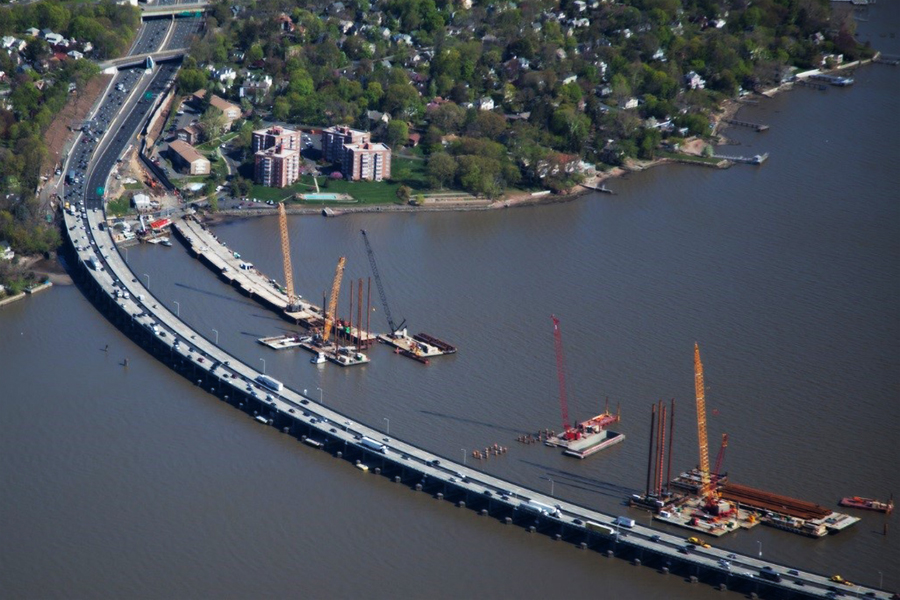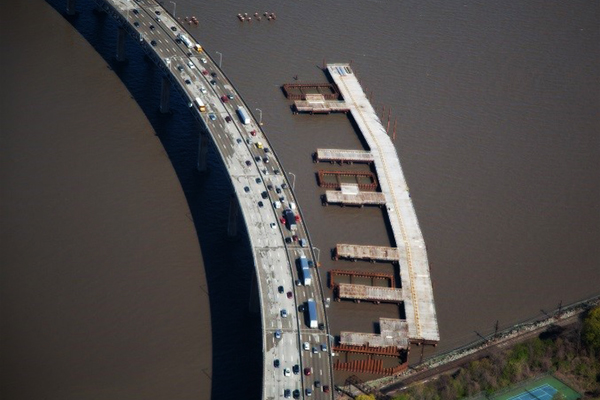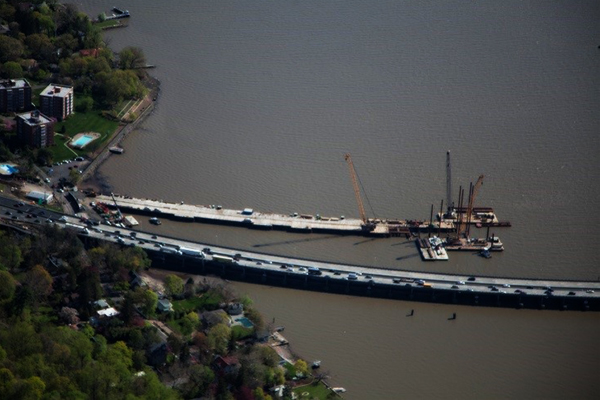

The Westchester trestle is temporary, allowing construction of the bridge piers closest to the shoreline, and it will be removed once the bridge is complete. Unlike the Rockland trestle, it does not connect to the shoreline, so is only accessible by boat. Workers, materials and equipment are transported by water to the trestle where they can be used to build the piers.
The New NY Bridge team is reducing the project’s impact to the environment through the use of construction platforms—known as trestles—on either side of the Hudson River. The trestles, which extend 1,000 feet from each shoreline and run parallel to the existing bridge, enable heavy duty machinery to work over shallow water and reduce the amount of dredging required on the project site.
The twin spans of the New NY Bridge will be supported by over 1,000 pipe piles which are typically installed in the riverbed using cranes mounted on barges. While these barges can easily maneuver in the middle of the Hudson, they cannot access the more shallow regions closer to the Rockland and Westchester shorelines without extensive dredging. Given that dredging is limited to a three-month period per year, this approach would extend the construction schedule of the bridge and create more of an impact on the environment.

Part of the Rockland trestle will remain after construction of the bridge is complete. The portion to be retained will act as a maintenance dock and will be the base for the boats and emergency vessels that are required for day-to-day operations on the new bridge.
The project team will instead use cranes positioned on the trestles to install those piles closest to the shorelines.
The trestles support other aspects of the project as well. For instance, the proximity of the Rockland trestle to the Thruway maintenance ramps allows for workers and materials to access the river from the highway, keeping more construction traffic off local streets. The Rockland trestle is bolstered by a bulkhead that helps preserve the shore from coastal erosion. The bulkhead acts as a wall that holds back the soil from being carried out into the river, and helps stabilize the shoreline around the trestle.
